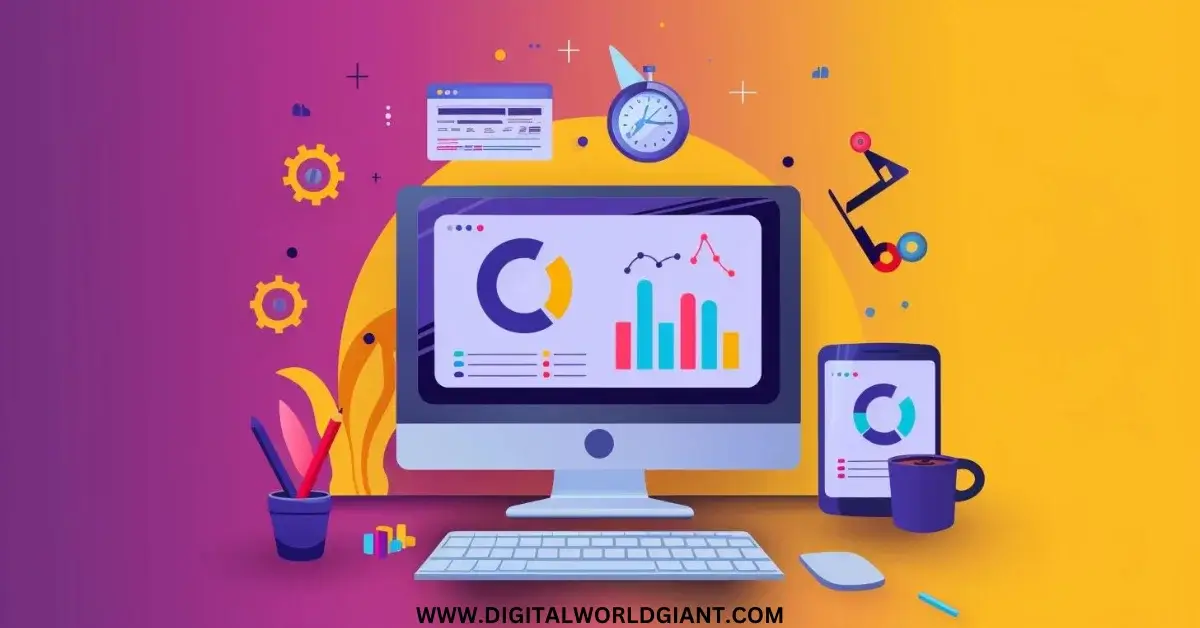Looking to skyrocket your website’s rankings and attract more organic traffic? Look no further! Introducing ‘The Ultimate On-Page Optimization Checklist for Higher Rankings.’
This comprehensive checklist will guide you through optimizing both the front-end and back-end components of your website, ensuring improved visibility on search engines like Google.
Discover the importance of on-page SEO and its role in helping search engines effectively crawl and index your web pages. Explore content elements like keyword research and visual content, as well as site architecture elements such as page URLs and internal linking.
Whether you’re a beginner or a seasoned marketer, this checklist provides specific strategies and tips to implement on-page SEO best practices.
Get ready to optimize your website and boost your organic traffic with this ultimate checklist!
Key Takeaways
- Conduct thorough keyword research to identify target keywords that align with your brand and goals.
- Optimize page elements such as title tags, H1 tags, and body content with target keywords to improve search engine visibility.
- Create SEO-friendly meta descriptions and URL slugs that include primary keywords and attract clicks.
- Focus on content quality and formatting by providing accurate, comprehensive, and engaging information, using proper headings, and utilizing tools for suggestions and improvements.
Keyword Optimization
To optimize your website for higher rankings, start by implementing effective keyword optimization strategies.
Begin by conducting thorough keyword research to identify the target keywords that align with your brand and goals. Utilize tools like Semrush’s Keyword Magic Tool to gather data on search intent, volume, and keyword difficulty.
Once you have chosen your target keywords, optimize your pages by incorporating them strategically. Include the primary keyword at the start of the title tag and in the H1 tag. Scatter repeats of the keyword throughout the body content, ensuring it’s included in the first paragraph. However, be cautious of keyword stuffing and prioritize natural-sounding content.
To analyze and improve your keyword optimization efforts, make use of Semrush’s On-Page SEO Checker and SEO Content Template.
Meta Description and URL Optimization
Optimize your meta description and URL to improve your website’s visibility and attract higher rankings. These two elements play a crucial role in attracting clicks and conveying the relevance of your page to search engines. Here are four key points to consider:
- Craft a compelling meta description that entices users to click and includes your primary keyword.
- Keep your meta description within 120 characters to avoid truncation.
- Pay attention to your URL slug, ensuring it’s concise, clear, and descriptive.
- Consider using your primary keyword as part of your URL slug for added SEO value.
Content Quality and Formatting
Improving the quality and formatting of your content is essential for achieving higher rankings. When it comes to content quality, it’s important to review your content for accuracy and avoid duplicating large chunks of text. Check for plagiarism and be concise yet comprehensive, providing all the necessary information. Formatting elements are crucial for enhancing readability and engaging readers. One effective way to format your content is by using subheadings and properly marking them up with header tags, such as H2 for subheadings and H3 for sub-subheadings. This not only improves the user experience but also helps search engines understand the structure of your content. Consider incorporating the following table to engage your audience further:
| Formatting Elements | Benefits |
|---|---|
| Subheadings | Enhances readability |
| Header tags | Improves user experience |
| Bullet points | Organizes information |
| Bold and italics | Highlights important points |
Navigation and Internal Links
When optimizing your website for higher rankings, one crucial aspect to focus on is improving navigation and incorporating internal links. By enhancing the navigation of your website and strategically placing internal links, you can provide a seamless user experience and help search engines crawl and index your pages more effectively.
Here are four key strategies to consider:
- Use descriptive anchor text for internal links: This will give users a clear idea of what they can expect when they click on the link and encourage them to explore further.
- Consider adding external links to high-quality resources: By providing valuable external resources, you can enhance the credibility and authority of your content.
- Include internal links in navigation menus and breadcrumb navigation: This makes it easier for users to navigate your website and find relevant information.
- Regularly review and update your internal links: Ensure that all links are valid and lead to the intended pages, as broken links can negatively impact user experience and SEO.
Visual Content, Schema Markup, and Technical SEO
Enhance your website’s performance and visibility with engaging visual content, schema markup, and technical SEO strategies.
Including visual content such as images and videos with descriptive alt text can help attract and engage visitors. It’s important to resize and compress images to avoid slowing down page loading time.
Hosting videos on platforms like YouTube and embedding them in your content can also improve user experience.
Applying schema markup provides additional information to Google and can help your website stand out in search results.
It’s crucial to ensure that Google’s web crawlers index your page and optimize your HTML, remove redirect chains, and minimize JavaScript/CSS files to increase page speed.
Additionally, making sure that your page is mobile-friendly is essential for mobile SEO success.
Introduction to On-Page SEO
To understand the importance of on-page SEO and how it can improve your website’s rankings, let’s delve into the fundamentals of optimizing your web pages for search engines.
Here are four key points to consider:
- On-page SEO optimizes both the front-end and back-end components of a website.
- Google ranks websites based on on-page SEO, off-page SEO, and technical SEO.
- On-page SEO enables search engines to crawl and index a page, while off-page SEO includes social sharing and external linking.
- Technical SEO involves factors like structured data, site speed, and mobile readiness.
Importance of On-Page SEO
By implementing effective on-page SEO strategies, you can improve your website’s visibility to search engines and attract more organic traffic. On-page SEO plays a crucial role in telling Google about your website and its value. It’s necessary to optimize your website for search engines in order to rank higher and attract more traffic.
The tweaks you make to your on-page SEO are visible to visitors on the page, making it even more important to do it correctly. Every part of on-page SEO, from keyword optimization to content quality and formatting, is up to you as the website owner.
Content Elements for On-Page SEO
When optimizing your website for higher rankings, it’s essential to pay attention to the content elements that contribute to on-page SEO. To evoke emotion in your audience and create engaging content, consider the following:
- Incorporate visual content, such as images, to enhance engagement and scannability.
- Use HTML elements, like page titles, headers, and meta descriptions, to optimize your content for search engines.
- Improve the visibility of your content by adding image alt-text and structured markup.
- Conduct thorough keyword research to create high-quality content that aligns with search intent.
Site Architecture Elements for On-Page SEO
To optimize your website for higher rankings and improve your on-page SEO, it is crucial to pay attention to the site architecture elements that contribute to a seamless user experience and help search engines crawl and index your pages effectively. These elements include page URLs, site hierarchy, internal linking, XML sitemaps, and user-friendly navigation. By ensuring that your page URLs are simple and consistent, organizing your site hierarchy for easy crawling, implementing proper internal linking, creating XML sitemaps, and providing user-friendly navigation, you can enhance the overall structure of your website and make it more search engine-friendly. This will ultimately improve your chances of ranking higher in search engine results pages (SERPs) and attract more organic traffic.
| Site Architecture Elements for On-Page SEO |
|---|
| 1. Page URLs |
| 2. Site Hierarchy |
| 3. Internal Linking |
| 4. XML Sitemaps |
| 5. User-Friendly Navigation |
Specific Strategies for On-Page SEO
Now let’s explore five specific strategies that can greatly improve your on-page SEO and help you achieve higher rankings:
- Incorporate visual content with descriptive file names and alt-text: Engaging visual content, such as images and videos, can enhance user experience and improve page rankings. Make sure to use descriptive file names and alt-text to optimize the visibility of your visual content.
- Optimize for conversions with clear call-to-action (CTA) elements: In addition to improving your search engine rankings, on-page SEO should also focus on converting visitors into customers. Use clear and compelling CTAs throughout your content to guide users toward taking the desired action.
- Review and edit page content for thoroughness and clarity: High-quality content is crucial for on-page SEO. Regularly review and edit your content to ensure it’s comprehensive, accurate, and easy to understand for your audience.
- Add relevant links for easy navigation and regularly review for validity: Internal and external links play a significant role in on-page SEO. Include relevant links within your content to provide additional resources and improve navigation. Regularly review these links to ensure they’re still valid and functional.
Implementing these strategies will help you optimize your on-page SEO and increase your chances of ranking higher in search engine results.
SEO Setup Checklist
To optimize your website for higher rankings, start by completing the SEO setup checklist. This checklist includes important tasks that will help you set up your website for search engine optimization. Here is a table outlining the key steps you need to take:
| SEO Setup Checklist |
|---|
| Set up Google Search Console |
| Install Bing Webmaster Tools |
| Set up Google Analytics |
| Connect Google Analytics with Google Search Console |
| Install Yoast SEO (WordPress Users Only) |
Frequently Asked Questions
How Can I Determine Which Keywords to Target for My Website?
You can determine which keywords to target for your website by conducting keyword research using tools like Semrush’s Keyword Magic Tool. Consider search intent, volume, and keyword difficulty, and choose keywords that align with your brand and goals.
What Is the Ideal Length for a Title Tag?
The ideal length for a title tag is between 50-60 characters. Make sure to include your primary keyword at the beginning. Avoid keyword stuffing and use Semrush’s On-Page SEO Checker for analysis.
How Can I Optimize My Meta Description to Attract Clicks?
To optimize your meta description and attract clicks, include your primary keyword, keep it within 120 characters, and write a compelling description that entices users to click. Remember, the meta description is visible in search results.
What Is the Importance of Internal Linking for On-Page Seo?
Internal linking is crucial for on-page SEO. It helps search engines navigate your site and improves user experience. By adding descriptive anchor text and relevant links, you can easily guide visitors and boost your rankings.
How Can I Improve the Loading Speed of My Website for Better Seo?
To improve your website’s loading speed for better SEO, you can optimize images, reduce server response time, and use caching. These steps will enhance user experience and boost your rankings on search engines.
Conclusion
So there you have it, the ultimate on-page optimization checklist for higher rankings.
By implementing these strategies and following the tips provided, you can optimize your website and attract more organic traffic.
Whether you’re a beginner or an experienced marketer, this checklist offers specific techniques to help you achieve better rankings.
So don’t wait any longer; start optimizing your website today and watch your organic traffic soar!



